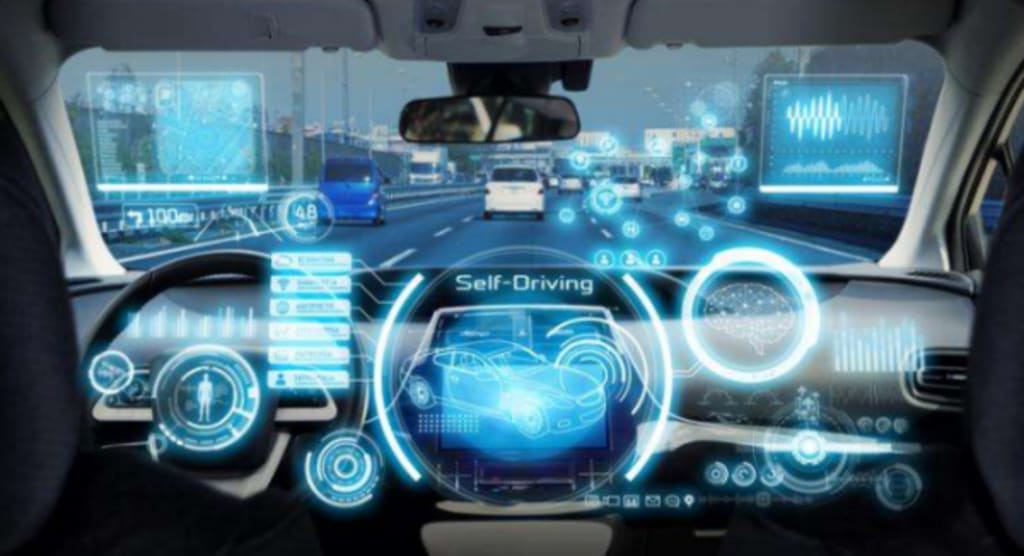
In recent years, the automotive industry has been witnessing a groundbreaking transformation with the advent of autonomous vehicles. Once the realm of science fiction, self-driving cars are now a tangible reality, bringing about a wave of excitement and anticipation. This article delves into the fascinating world of autonomous vehicles, exploring the technology behind them, their potential impact on society, and the challenges and opportunities that lie ahead.
I. The Technology behind Autonomous Vehicles:
1. Sensor Systems:
Autonomous vehicles rely on a sophisticated array of sensors, including cameras, radar, lidar, and ultrasonic sensors. These sensors collect data about the vehicle's surroundings, detecting objects, pedestrians, and other vehicles, enabling the car to make informed decisions in real-time.
2. Artificial Intelligence and Machine Learning:
The heart of autonomous vehicles lies in the advanced artificial intelligence (AI) algorithms and machine learning models that process the sensor data and make complex decisions. Through deep learning and neural networks, self-driving cars can learn and adapt to different driving scenarios, continuously improving their capabilities.
3. Connectivity and Communication:
Autonomous vehicles are equipped with advanced connectivity features that allow them to communicate with other vehicles, traffic infrastructure, and even pedestrians. Vehicle-to-vehicle (V2V) and vehicle-to-infrastructure (V2I) communication enable real-time information exchange, enhancing safety and optimizing traffic flow.
II. Benefits and Potential Impact:
1. Enhanced Safety:
One of the most significant advantages of autonomous vehicles is their potential to significantly reduce traffic accidents caused by human error. With their precise sensors and AI algorithms, self-driving cars have the potential to detect and respond to hazards faster than human drivers, potentially saving countless lives.
2. Improved Efficiency and Traffic Management:
Autonomous vehicles can optimize traffic flow, reduce congestion, and minimize fuel consumption through coordinated driving patterns and efficient route planning. Additionally, the ability to communicate with traffic infrastructure can further enhance traffic management systems, leading to smoother and safer journeys.
3. Increased Accessibility and Mobility:
Self-driving cars have the potential to revolutionize transportation for individuals with disabilities, elderly populations, and those without access to personal vehicles. Autonomous taxis and ride-sharing services could offer affordable and convenient mobility options, transforming the way people commute and travel.
4. Environmental Benefits:
By optimizing driving patterns and minimizing traffic congestion, autonomous vehicles have the potential to reduce greenhouse gas emissions. Furthermore, the rise of electric autonomous vehicles can contribute to a cleaner and more sustainable transportation system, reducing dependence on fossil fuels.
III. Challenges and Considerations:
1. Safety and Liability:
Ensuring the safety of autonomous vehicles is of paramount importance. Although self-driving cars have demonstrated impressive capabilities, there are still concerns about their ability to handle complex and unpredictable scenarios. Additionally, determining liability in the event of accidents involving autonomous vehicles raises legal and ethical questions.
2. Ethical Decision Making:
Autonomous vehicles may face situations where they must make split-second decisions that involve weighing different risks. These ethical dilemmas, such as choosing between the safety of passengers and pedestrians, present challenging moral considerations that need to be addressed by policymakers and manufacturers.
3. Regulatory Framework and Infrastructure:
The widespread adoption of autonomous vehicles requires a comprehensive regulatory framework that addresses safety standards, data privacy, cybersecurity, and the integration of autonomous vehicles into existing transportation systems. Additionally, the development of supportive infrastructure, such as dedicated lanes and smart traffic systems, is crucial for the seamless integration of self-driving cars.
IV. Beyond Self-Driving Cars: Future Perspectives:
1. Autonomous Delivery and Logistics:
The technology behind autonomous vehicles has potential applications beyond passenger transportation. Delivery services and logistics companies are exploring the use of self-driving vehicles for efficient and cost-effective last-mile deliveries, revolutionizing the e-commerce industry.
2. Shared Mobility and Mobility-as-a -Service (MaaS):
The rise of autonomous vehicles could pave the way for shared mobility models, where individuals no longer own cars but rely on on-demand transportation services. Mobility-as-a-Service (MaaS) platforms could integrate autonomous vehicles, public transportation, and other mobility options into a seamless and personalized travel experience.
3. Urban Planning and Smart Cities:
Autonomous vehicles can influence urban planning and the design of future cities. With reduced parking needs and improved traffic flow, urban spaces can be repurposed for green areas, pedestrian zones, and community spaces, enhancing the quality of life for residents.
Conclusion:
The era of autonomous vehicles represents a technological leap that promises to reshape our transportation landscape. Self-driving cars hold the potential to enhance safety, efficiency, and accessibility while transforming our relationship with transportation. However, realizing the full potential of autonomous vehicles requires addressing technical, regulatory, ethical, and societal challenges. As technology advances and stakeholders work together, the vision of a future filled with autonomous vehicles and smart transportation systems is inching closer to reality, ushering in a new era of mobility.





Comments
There are no comments for this story
Be the first to respond and start the conversation.